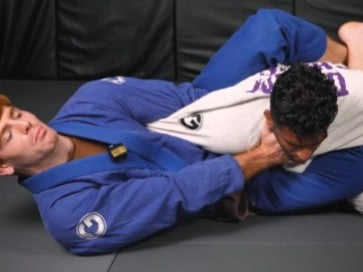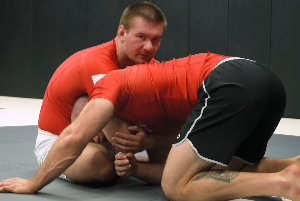Taping your fingers for Jiu Jitsu (BJJ) is an often overlooked way to protect your hands from injury and keep yourself on the mats for longer stretches.
As a fellow practitioner, you know that jiu jitsu is a challenging sport that requires a combination of strength, skill, and determination. But what you may not know is that taping your fingers can help you stay safe and in the game.
By taping your fingers, you can help prevent injuries to the tendons, ligaments, and joints of your hands. In this article, we'll explore why and how you should tape your fingers for jiu jitsu, as well as share some bonus tips for injury prevention.
So, let's get started and make sure you stay in the game for the long haul!
Why Should You Tape Your Fingers for BJJ?
Taping your fingers for BJJ is essential for protecting them from injury and increasing your grip strength.
Jiu jitsu practitioners understand that taping their fingers gives them an extra layer of protection when grappling and rolling. It also helps them to keep a better grip on their opponent, which is key to successful execution of various techniques. When you tape your fingers, you're investing in your own safety and success.
Taping your fingers also helps you prevent the dreaded 'finger cramps.' These are caused by repetitive motions when gripping your opponent or the mat and can easily be avoided with taping. Additionally, taping your fingers can help protect the skin from the friction caused by your gi.
If you want to make sure that your fingers are always ready for action when you hit the mats, taping them is the way to go. It's an inexpensive and easy way to ensure that your fingers stay safe and protected. Investing in your safety and success on the mats will benefit your training and performance. Don't miss out!
Taping Techniques
Knowing the right techniques for taping can help protect and support your hands for more successful grappling! It's important to use the right type of tape, one that won't leave residue behind when you take it off.
Start by measuring the tape from the base of your palm to the tip of your middle finger. Wrap the tape around your palm once, then wrap it around each finger separately. This will give your fingers more support and stability. Make sure to avoid wrapping the tape too tightly—you want to be able to move your hands with ease.
Finally, you can cut the tape to the length of your pinky and thumb, or use a pre-cut ring. These techniques will ensure that your hands are well-protected during your grappling sessions, giving you the confidence to tackle your next opponent!
Here's a great video showing several methods for taping your fingers:
What Type of Finger Tape Should You Use?
When it comes to taping your fingers for jiu jitsu, the most important thing is to make sure you use a type that will stay in place and protect your joints, so you can stay safe while you practice.
We've been making finger tape for Jiu Jitsu athletes for over 5 years, and have perfected the right blend of adhesives and external tape materials. Shop our finger tape here.
The "Buddy" Sytem
If you have a painful finger injury, one of the most effective things you can do to help it heal is to tape it to the finger next to it. We call this the buddy system.
Start by wrapping the injured finger several times around, to make sure it's secured by the finger tape. Then, closely wrap one of the uninjured fingers next to it with the same strand of tape. This finger is the "buddy" that protects the injured finger.
Make sure not to wrap things too tightly! You still want your fingers to be able to get plenty of blood flow.
Taping the Knuckles
Taping your knuckles correctly for jiu jitsu can help prevent injuries, so it's important to do it right!
Start by choosing a tape that's comfortable on your skin. If it's too thick, it'll be uncomfortable while you grapple.
Then, cut two strips of tape that are about the length of your fingers. Lay one piece of tape just below your knuckles, and the other just above your knuckles.
Gently press the tape down to ensure it sticks, and make sure to press it down evenly. You don't want any air bubbles or lumps under the tape.
To finish, cut the tape to fit your knuckles. You want it to fit snugly but not too tight. Getting the perfect fit will help you stay comfortable while you roll.
Now you're ready to hit the mats with confidence!
Thumb Taping
Wrapping your thumb securely with tape is essential for protecting it while you roll.
Start by applying a piece of tape across the back of your thumb, around your wrist. Then, wrap the tape around your thumb in a spiral, from the base of the thumb to the tip. Make sure you overlap the tape slightly as you go.
A thumb wrap will provide protection and help you grip your opponent. Not taping your thumb can lead to painful injuries, so be sure to take the time to do it right.
What About Taping Your Toes?
Although often overlooked, wrapping your toes can be just as important as taping your fingers for jiu jitsu. It can help protect your feet from injury during strenuous training sessions.
To ensure your toes are ready for any grappling situation, it's important to take the time to tape them up properly. You don't need anything fancy, just some athletic tape and a few pieces of foam or gauze.
Start by placing a piece of foam or gauze between each toe to keep them separated, then wrap your foot in athletic tape, winding it around each toe and then up the length of your foot. Doing this will provide extra cushion and support for your foot, preventing injury and allowing you to feel secure and safe in your movements.
Plus, it's a great way to show your dedication to the sport and your commitment to your own well-being. So, don't forget to tape up your toes!
Bonus Tips for Injury Prevention
Now that you know why and how to tape your fingers and toes for jiu jitsu, let's look at some bonus tips to help you stay safe on the mat.
First, always warm up and stretch before rolling. This helps get your body ready for the physical demands of jiu jitsu and reduces your risk of injury.
Second, stay hydrated throughout practice and make sure you replenish lost fluids after rolling. Consider taking Jiu Jitsu supplements to help your body prepare and recover from heavy training sessions.
Lastly, listen to your body and make sure you're getting enough rest. Rest days are just as important as days on the mat in keeping your body healthy and preventing injuries.
Following these tips will help you stay safe and enjoy jiu jitsu for years to come.
Conclusion
Wrapping up, taping your fingers for BJJ is an effective way to protect your digits and avoid painful injuries. Sure, it may seem tedious, but the time investment is worth it in the long run.
Plus, you don't have to limit taping to your fingers - you can also tape your toes for added protection.
And, if you're still not convinced, you can always start off slow and gradually increase the amount of taping you do until you're comfortable with it.
There's no one-size-fits-all approach, so find what works best for you.



